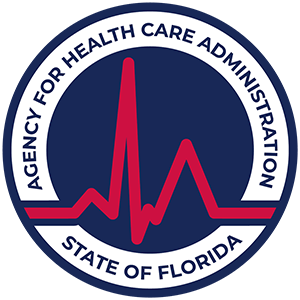Uncertainty in Addiction Treatment
Explore how uncertainty in addiction treatment affects decision-making and access to vital support systems.

Understanding Addiction Treatment
Understanding the factors that contribute to successful addiction treatment is essential for improving client outcomes. This section explores client retention factors and the impact of group work on treatment effectiveness.
Client Retention Factors
Client retention is critical in addiction treatment. Research indicates that individuals who remain in outpatient treatment often share common characteristics; they tend to be White, male, and employed. Conversely, clients who drop out may experience higher dropout rates due to several red flags including marginalized status, recent hospitalization, and a family history of substance abuse.
The influence of family dynamics also plays a significant role in client recovery. Clients from families with a history of substance use disorders face additional challenges. If family members are still actively using substances, it can jeopardize the client's treatment progress.
Group Work Impact
Group work significantly impacts treatment outcomes in intensive outpatient treatment (IOT) programs. Group cohesion is vital for client recovery, and instability in group membership often leads to higher dropout rates. Effective strategies for establishing cohesive IOT groups include ensuring that at least one therapist possesses the required academic credentials for group therapy.
The following table highlights key factors influencing client retention in addiction treatment:
FactorImpact on RetentionEmployment StatusHigher retention in employed clientsFamily History of AbuseIncreased dropout ratesGroup CohesionCritical for recovery; instability can cause dropoutsTherapist QualificationsEnhances effectiveness of group therapy
By understanding these retention factors along with the significant role of group therapy, professionals can better address the challenges of uncertainty in addiction treatment and enhance the likelihood of successful recovery for clients.
Challenges in Addiction Treatment
Addiction treatment is often complicated by various challenges that hinder an individual's progress. Two significant areas of concern are employment-related hurdles and barriers in physician interventions.
Employment-Related Hurdles
Individuals in addiction treatment frequently struggle to balance work responsibilities with their recovery efforts. These challenges may include managing unrealistic employer expectations while attending essential group sessions. A report suggests that clients should be cautious about overcompensating for past behaviors while promoting a balanced approach to their professional duties.
Here is a summary table of common employment-related hurdles faced by clients in addiction treatment:
Employment-Related HurdlesDescriptionWork Schedule ConflictsDifficulty finding time for treatment due to work obligations.Employer ExpectationsPressure from employers that may conflict with recovery processes.Stigma in the WorkplaceFear of discrimination or negative repercussions for seeking treatment.
Physician Interventions Barriers
Physician engagement plays a crucial role in addiction treatment. However, several barriers prevent physicians from effectively intervening. One of the main challenges is the "institutional environment," characterized by a lack of support from institutions or employers and insufficient resources for implementing necessary interventions. This aspect of practice was observed in most reviewed studies.
Additionally, the cost of delivering addiction interventions is a significant deterrent. Physicians often cite financial concerns when considering the adoption of evidence-based practices for treating substance use disorders.
Below is a table that outlines the key barriers faced by physicians in addiction treatment intervention:
Physician Intervention BarriersDescriptionLack of Institutional SupportInsufficient backing from healthcare institutions, impacting intervention capabilities.Resource LimitationsLimited access to necessary resources to provide effective treatment.Financial ConcernsWorry about costs associated with addiction treatment, discouraging intervention efforts.
The challenges in both employment and physician intervention can create a cycle of uncertainty in addiction treatment. Addressing these hurdles is essential for improving treatment outcomes and encouraging individuals to seek the help they need. For further insights on the stigma surrounding addiction, explore our social stigma of addiction article.
Barriers to Seeking Treatment
Seeking treatment for addiction can be fraught with challenges that hinder individuals from getting the help they need. Two major barriers are stigma and social influences, along with reimbursement concerns. Both play a significant role in the decision-making process surrounding treatment.
Stigma and Social Influences
Stigma surrounding substance use disorders remains a significant barrier to treatment. Approximately 10.4 percent of individuals with substance use disorders actually receive the treatment they need, despite improved access due to the Paul Wellstone and Pete Domenici Mental Health Parity and Addiction Equity Act of 2008 and the Affordable Care Act NCBI Bookshelf. This reluctance to seek help is often fueled by concerns about privacy and fear of being labeled, which can deter individuals from pursuing necessary treatment.
The stigma associated with addiction can lead to feelings of shame and isolation. Individuals might fear social repercussions, judgment, or rejection from peers and family, which can ultimately worsen their situation. Research indicates that stigma is linked to lower service utilization, poorer mental health outcomes, and increased engagement in risky behaviors. In certain situations, individuals may avoid treatment entirely to escape diagnostic labeling.
Stigma FactorsImpact on Treatment-Seeking BehaviorsConcerns about privacyAvoidance of treatmentFear of labelingIncreased isolationSocial rejectionDeterioration of mental health
Reimbursement Concerns
Reimbursement issues further complicate access to addiction treatment. Although legislative measures have improved coverage for mental health and substance use disorder services for millions of Americans, many individuals still face challenges in securing reimbursement for their treatment. This can include complications in insurance coverage, high out-of-pocket expenses, and issues related to the acceptance of services under various insurance plans.
The financial burden associated with treatment can be overwhelming, discouraging individuals from seeking help. With the high costs related to treatment, individuals often weigh the risks of seeking care against their financial capacity. The fear of incurring significant debt can lead them to postpone or forgo treatment altogether, ultimately prolonging their struggle with addiction. For more detailed insights into the financial aspects of treatment, including holistic options, check the section on holistic treatment center for addiction.
Reimbursement FactorsImpact on Access to TreatmentHigh out-of-pocket costsReduced likelihood of seeking careCoverage limitationsDelay in receiving necessary treatmentProvider network restrictionsIncreased barriers to quality care
Addressing these barriers, especially stigma and reimbursement concerns, is crucial in improving treatment accessibility for those in need. By fostering a more supportive environment and enhancing financial protections, it is possible to encourage more individuals to seek help for their addiction.
Treatment Disparities
Exploring disparities in addiction treatment reveals significant gaps in access and quality of care. Many individuals with substance use disorders face numerous challenges in obtaining effective treatment.
Treatment Gap Statistics
In 2022, nearly 49 million people in the U.S. had at least one substance use disorder. However, only approximately a quarter (13 million individuals) received treatment in the past year. This illustrates a staggering treatment gap, with only 10.4% of individuals with a substance use disorder accessing care despite increased coverage options.
StatisticValueTotal people with substance use disorder49 millionIndividuals who received treatment13 million (26%)Percentage of individuals accessing care10.4%
These statistics highlight a critical issue in addiction treatment accessibility. Even among those who do seek help, only about a third receive treatment that meets minimal standards of care. This situation underscores the need for enhanced support systems to bridge the treatment gap.
Policy Impact Evaluation
Policies affecting addiction treatment play a significant role in shaping access to care. The barriers created by legal and policy constraints often impede individuals from receiving appropriate treatment. Even with increased access to mental health and substance use disorder services, many individuals still struggle to obtain care. This is particularly true for those affected by social stigma, which further complicates the treatment landscape [4].
Evaluating the impact of these policies is crucial for understanding how they influence addiction treatment disparities. Efforts to implement more inclusive and comprehensive policies can lead to improved outcomes for individuals facing substance use disorders. For more information on the importance of timely intervention, refer to our article on timely addiction treatment importance.
Addressing these treatment disparities is essential for fostering a more equitable approach to addiction care, ensuring that individuals receive both the support they need and the quality of treatment that promotes recovery.
Influence of Uncertainty in Addiction
Higher Intolerance of Uncertainty
Individuals with addiction often demonstrate a higher intolerance of uncertainty (IU), particularly those undergoing treatment for opioid dependence. Research indicates that these individuals show greater discomfort in situations where the outcomes are uncertain when compared to non-addicted peers. In controlled studies, participants with addiction were less likely to return to previously rewarded situations in tasks designed to measure response to uncertainty [5].
Intolerance of uncertainty can manifest as a heightened perception of uncertain situations as negative, influencing how individuals navigate their daily lives. For instance, those with higher IU may find it challenging to cope with the unpredictability inherent in addiction recovery, leading to avoidance behaviors and increased anxiety.
Impact on Decision-Making
The presence of high IU significantly affects decision-making processes in individuals facing addiction. Research shows that those with higher intolerance are inclined to seek more information before making decisions, especially under uncertain conditions. They often favor immediate, albeit lower-probability rewards over delayed, high-probability ones, reflecting a tendency to prioritize short-term satisfaction despite potential long-term consequences.
This decision-making pattern can lead to suboptimal choices that reinforce addictive behaviors. For example, high IU individuals may opt for a low-reward but immediate substance use scenario rather than consider a delayed but more beneficial outcome like recovery or treatment engagement. This dynamic challenges treatment providers to consider the cognitive biases associated with IU when devising effective strategies for those in addiction recovery.
Understanding the intricacies of uncertainty in addiction treatment can further aid in developing more effective interventions to support individuals struggling with these issues. Emphasizing skills to manage uncertainty can empower those in recovery to make healthier choices. For more insights, explore the impact of social stigma of addiction on treatment-seeking behavior or the significance of timely addiction treatment importance in achieving successful recovery outcomes.
Structural Barriers in Treatment
Structural barriers in addiction treatment can significantly impact the effectiveness and accessibility of care for individuals seeking help. These barriers are often rooted in legal and policy constraints as well as issues related to treatment providers.
Legal and Policy Constraints
Legal and policy frameworks play a critical role in shaping the landscape of addiction treatment. Despite recent federal policy changes aimed at reducing barriers to addiction treatment, there remains a gap between the improvements in policies and the actual patient care received. While the number of prescribers of opioid use disorder medication, such as buprenorphine, has increased, this has not translated into more patients receiving treatment. This disconnect highlights the complexities of implementing policy changes effectively.
Treatment Provider Issues
Treatment provider issues contribute to the systemic challenges faced in addiction treatment. There are numerous factors at play, including the limited availability of qualified professionals and the high costs associated with treatment. In 2003, the projected costs of substance use treatment in the United States were estimated at $21 billion, with 77% covered by public sources. These expenses incorporate healthcare costs, crime-related expenses, lost employment, decreased productivity, social and familial issues, and overdose deaths.
Research shows that structured barriers, including issues related to treatment provider services, are prevalent. A comprehensive analysis identified 37 structural barriers and 15 structural facilitators impacting substance use treatment, which underscores the need for improved access to and effectiveness of treatment programs [6].
The existence of these structural barriers presents a substantial challenge for those dealing with addiction, particularly when considering the extent of the treatment gap. In fact, an unmet need for substance use treatment impacts 99% of Americans who meet the criteria for alcohol or substance use disorders. This gap is prominently wider among women than men, even when accounting for problem severity and substance use rates.
Addressing these structural barriers is essential for enhancing the landscape of addiction treatment and ensuring that individuals receive the support they need. For those seeking a comprehensive approach, exploring a holistic treatment center for addiction may offer alternative pathways to recovery.
References
[2]:
[3]:
[4]:
[5]:
[6]:














.svg)








